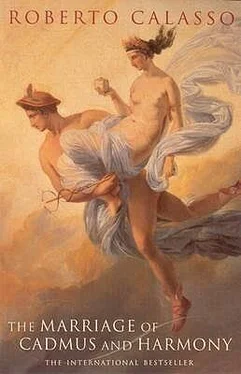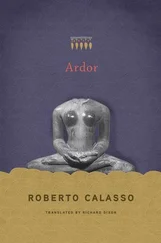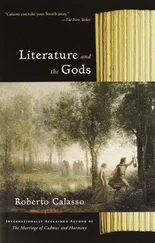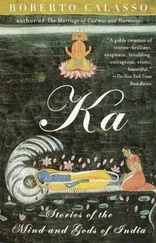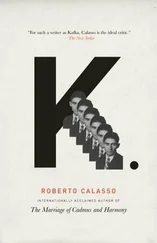Roberto Calasso - The Marriage of Cadmus and Harmony
Здесь есть возможность читать онлайн «Roberto Calasso - The Marriage of Cadmus and Harmony» весь текст электронной книги совершенно бесплатно (целиком полную версию без сокращений). В некоторых случаях можно слушать аудио, скачать через торрент в формате fb2 и присутствует краткое содержание. Год выпуска: 1993, Издательство: Alfred A. Knopf Inc, Жанр: Современная проза, на английском языке. Описание произведения, (предисловие) а так же отзывы посетителей доступны на портале библиотеки ЛибКат.
- Название:The Marriage of Cadmus and Harmony
- Автор:
- Издательство:Alfred A. Knopf Inc
- Жанр:
- Год:1993
- ISBN:нет данных
- Рейтинг книги:3 / 5. Голосов: 1
-
Избранное:Добавить в избранное
- Отзывы:
-
Ваша оценка:
- 60
- 1
- 2
- 3
- 4
- 5
The Marriage of Cadmus and Harmony: краткое содержание, описание и аннотация
Предлагаем к чтению аннотацию, описание, краткое содержание или предисловие (зависит от того, что написал сам автор книги «The Marriage of Cadmus and Harmony»). Если вы не нашли необходимую информацию о книге — напишите в комментариях, мы постараемся отыскать её.
The Marriage of Cadmus and Harmony — читать онлайн бесплатно полную книгу (весь текст) целиком
Ниже представлен текст книги, разбитый по страницам. Система сохранения места последней прочитанной страницы, позволяет с удобством читать онлайн бесплатно книгу «The Marriage of Cadmus and Harmony», без необходимости каждый раз заново искать на чём Вы остановились. Поставьте закладку, и сможете в любой момент перейти на страницу, на которой закончили чтение.
Интервал:
Закладка:
Helen resembled her two brothers, Castor and Pollux. She had a “simple spirit” (whatever that might mean), mild manners, splendid hair, a beauty spot between her eyebrows, a small mouth, perfect breasts. In Lindos she consecrated an amber cup that exactly covered one of them. When he burst into Troy to kill her, “they say that no sooner had he glimpsed Helen’s naked breasts than Menelaus dropped his sword.”
All her life Helen did nothing but show herself off and betray. We know little about how she felt, and what we do know is subject to doubt, because she had such a talent for mimicry (another of Aphrodite’s gifts) that they used to call her Echo. So she could easily have faked anything she wanted to. She brought nothing new to mankind, not even the disasters she caused. As Horace says, with the dismissive dispatch of the Quirites: “the cunt had been a terrible provoker of wars long before Helen came on the scene.” So even though some do grant her “skill in tapestry,” and even if she did (like a host of others) learn “many doctrines” from the learned Egyptians, Helen nevertheless remains the least virtuous of beings one could imagine. Maybe she had no psychology. And maybe it was impossible for her to have one. If she weeps, as she does on the Scaean Gate, a veil, dazzling as Zeus’s thunderbolts, hides her tears. The only thing she cared about was appearance, and hence poetry too. When she arrived in Mycenae with Menelaus and found the corpse of her sister, Clytemnestra, throat freshly slashed by Orestes, Helen did, as a sign of grief, cut the ends of her hair, but not so much as to risk making herself ugly. Not only did she compel Homer to write about her but, as one charming Byzantine author would later claim, she actually composed a poem about the Trojan War herself, which Homer then used for his own.
Napoleon began as a novelist: Helen wished to end up as the narrator of her own life. In any event, there must have been a profound affinity between her and poetry, for no woman in literature has ever been so exalted and so savaged. The chorus of Euripides’ Cyclops speaks of her thus: “So then, when you’d got your hands on the girl, did you take turns at balling her, seeing that she likes swapping husbands?”

Nemesis fled to the ends of the earth to escape Zeus, transforming herself into one animal after another, just as the manifest flees and scatters before being caught and pinned down by its principle. The same sequence of flight with metamorphoses followed by rape is repeated when Peleus chases Thetis and finally couples with her in the form of a cuttlefish. The repetition of a mythical event, with its play of variations, tells us that something remote is beckoning to us. There is no such thing as the isolated mythical event, just as there is no such thing as the isolated word. Myth, like language, gives all of itself in each of its fragments. When a myth brings into play repetition and variants, the skeleton of the system emerges for a while, the latent order, covered in seaweed.
Those two marine rapes, preceded by animal metamorphoses, stand out among hundreds of amorous adventures, just as the solitary children born from them stand out amid all others: Helen and Achilles, the two unique ones. Helen was unique in being Zeus’s only daughter on an earth swarming with the god’s bastard sons. Achilles was unique in that he was born to substitute for the truly unique one: that son Thetis never bore who would have replaced Zeus. And if Achilles, the unique one, is also a substitute for the unique one, this points to the fact that the realm of substitutions contains within itself the realm of the unique, without which, however, it could have neither meaning nor intensity. The most archaic form of the amorous chase, still close to the realm of perennial metamorphosis, was thus only a hairbreadth away from the most modern of dangers, that of the dawning of a post-Olympian era.
Having brought about the existence of Helen and Achilles, Zeus realized that he had already stretched the potential of his realm to the limit. Helen and Achilles had made their appearance; now nothing could prevent the consequences. But the apparition was to be a darting flash and no more. The blaze of Troy would consume them. After that, they could safely be allowed to proceed to the innocuous Blessed Isles. Or maybe they could get together on Leuke, as phantoms. But the world would never again know that tension, so insidious to the gods and for mortals unbearable, except in their memories, their poetry. We have mentioned four realms here: the realm of perennial metamorphosis is that of every beginning, when the word has not yet detached itself from the thing, nor the mind from the matter; the realm of substitution is the world of the digit, above all the digit as sign, as incessant substitution; the realm of the unique is the world that always eludes the clutches of language, the very appearing of the irrepeatable; the realm of Zeus is that of the Greek stories, of which we are still a part.
In Eratosthenes’ version, Nemesis’s long flight came to an end in the sea off Rhamnus in Attica, when Zeus the swan settled on the wild duck. That was the only time Nemesis would ever play a passive role. From then on, and for hundreds, thousands of years, she would appear as a young woman, of calm and grave expression, roaming all over the earth, treading, as often as not, on lifeless corpses. That remote animal scene in a wilderness of sea, unwatched by any eye, is the only episode of her life we know about. It was also the greatest exploit of Zeus’s reign: that of having forced necessity to bring forth beauty.
When the inhabitants of Rhamnus decided to consecrate a sanctuary to Nemesis, they commissioned Phidias to sculpt a giant statue of the goddess. Some claim that the Rhamnus Nemesis was in fact an Aphrodite sculpted by Agoracritus, Phidias’s pupil and lover. Others say that Phidias allowed the sculpture to be passed off as the work of his lover. Either way, the statue would be famous for centuries. Varro preferred it above all others. A fragment of the head has been discovered; the rest we must reconstruct from descriptions and coins. So the base of the statue showed Leda leading a reluctant Helen toward her real mother, Nemesis. But what was the relationship between mother and daughter? We know a great deal about Helen, whereas only a few details have come down to us about the divine figure of Nemesis, and even these are often enigmatic. This goddess of the offense that boomerangs back on its perpetrator must have been very beautiful if people could mistake her for Aphrodite. Herself the great enemy of hubris, she gave birth to a daughter whose very body was an offense and in doing so provoked the most magnificent unfolding of hubris in all of Greek history: the Trojan War.
In one hand Nemesis held a designer’s square, or a pair of reins, or an apple branch. The wheel of destiny stood beside her and could become the wheel of her griffin-drawn chariot. She also held the urn of destiny. “Queen of motives and arbitress of all things,” she had always possessed the power to bind men in the “never-to-be-loosened net of necessity” ( necessitatis insolubili retinaculo vinciens ). Often Nemesis would lift a hand to her shoulder, as if to adjust her tunic. And often she bowed her head, eyes on her breast, as though deep in thought. Some of the ancients said that when she did this she was spitting into her tunic to ward off bad luck. Phidias (or Agoracritus) sculpted a handsome crown on her head with representations of stags and of Nike, goddess of victory. She held a decorated goblet in her hand showing figures of Negroes. When Pausanias saw the statue, he was puzzled by this goblet. He wasn’t convinced by the explanations people gave him, that it showed a group of Ethiopians, because Nemesis’s father was Oceanus and the Ethiopians lived near Oceanus. In a doggedly determined digression on the Ethiopians, he demonstrates that such a supposition was baseless. But he didn’t dare to suggest an alternative and moved on. Other classical authors found it equally difficult to account for all Nemesis’s attributes. The designer’s square stood for the notion of measure, the cosmic rule that punishes every excess, but what was that aphrodisian apple branch about? And the impressive stags around her forehead? And why that frequently repeated gesture of raising a hand to one shoulder, where she had a buckle in the shape of a griffin, her favorite animal? Was it to cover herself better, or to undo the buckle?
Читать дальшеИнтервал:
Закладка:
Похожие книги на «The Marriage of Cadmus and Harmony»
Представляем Вашему вниманию похожие книги на «The Marriage of Cadmus and Harmony» списком для выбора. Мы отобрали схожую по названию и смыслу литературу в надежде предоставить читателям больше вариантов отыскать новые, интересные, ещё непрочитанные произведения.
Обсуждение, отзывы о книге «The Marriage of Cadmus and Harmony» и просто собственные мнения читателей. Оставьте ваши комментарии, напишите, что Вы думаете о произведении, его смысле или главных героях. Укажите что конкретно понравилось, а что нет, и почему Вы так считаете.
